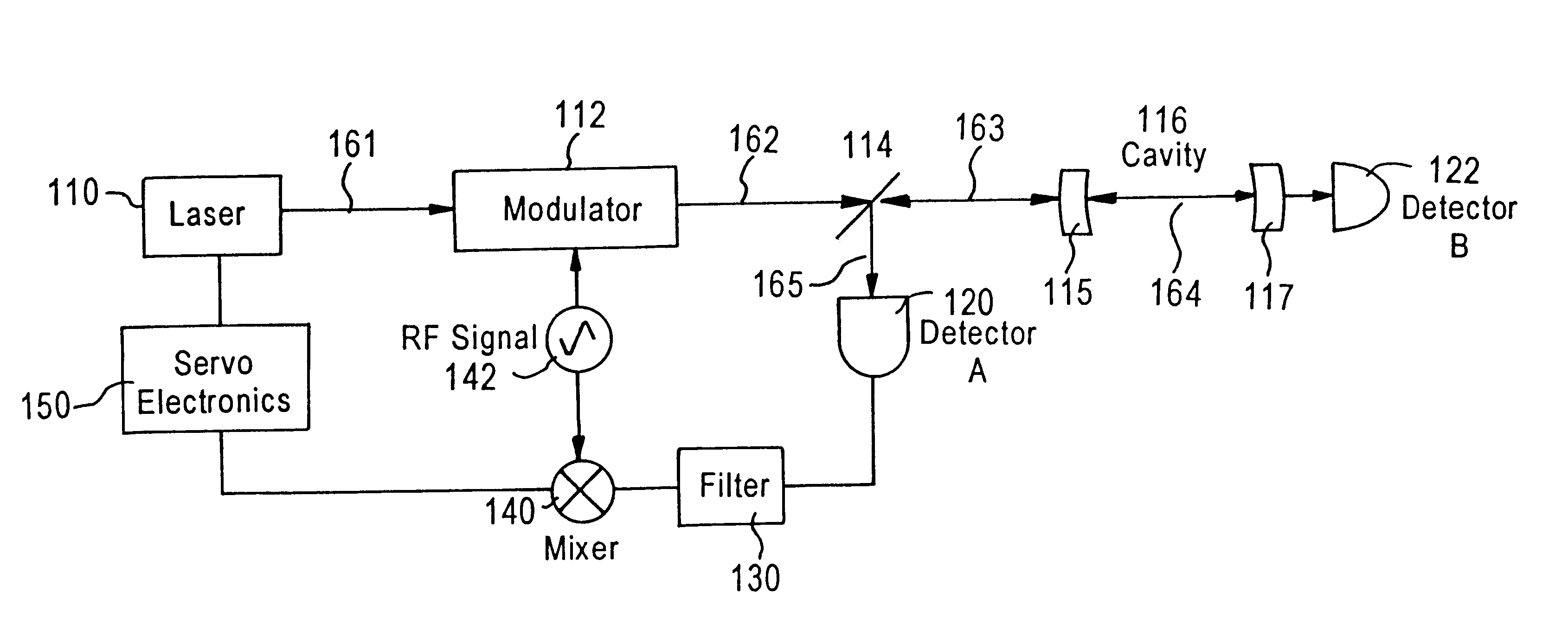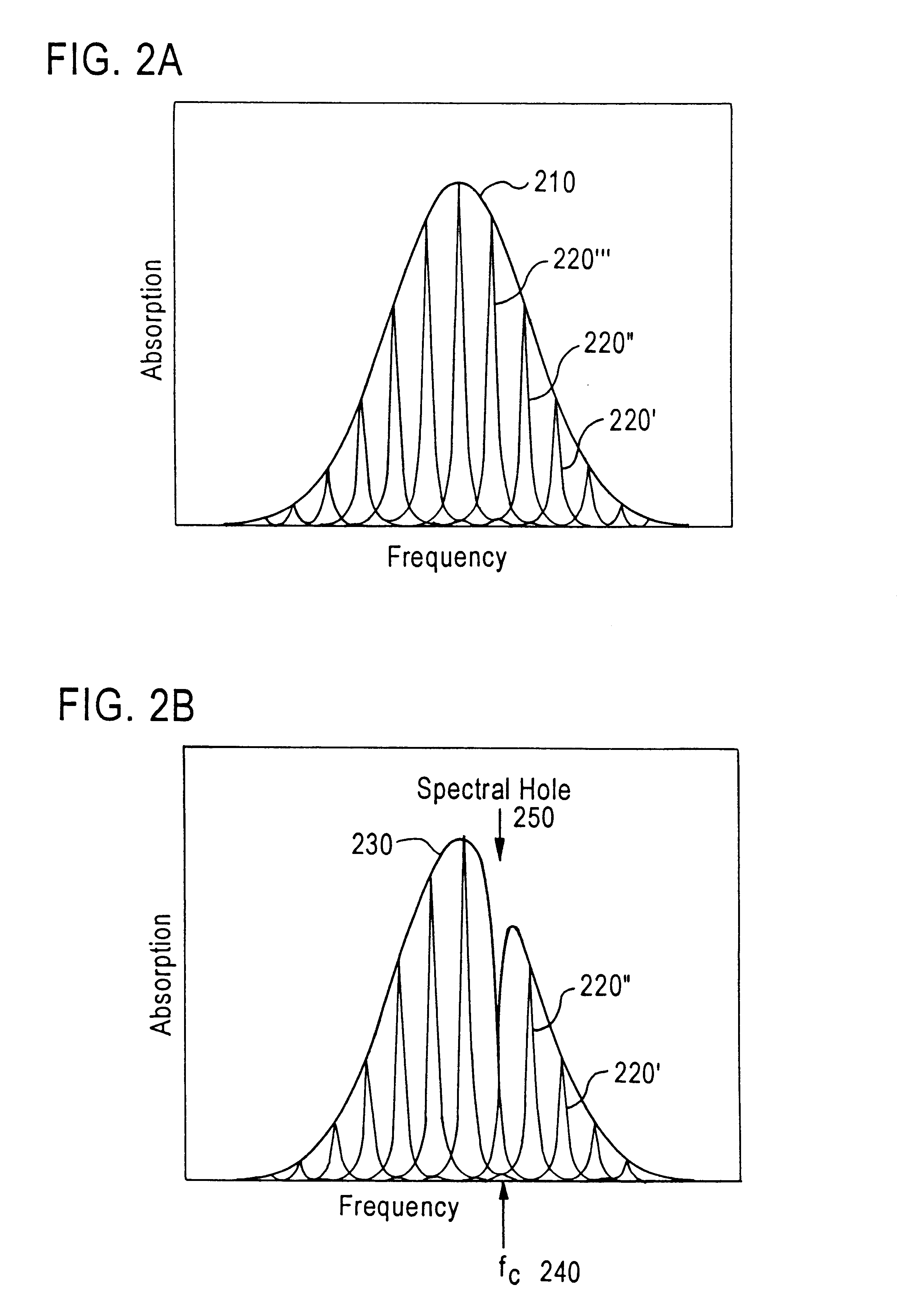Laser frequency stabilizer using transient spectral hole burning
a transient spectral hole and frequency stabilizer technology, applied in the direction of laser details, semiconductor lasers, electrical apparatus, etc., can solve the problems of increasing the degree of frequency mismatch, the mode spacing of the fabry-perot cavity does not nearly approach this uniformity, and the persisted spectral hole burning material, etc., to achieve accurate stabilization of laser frequency
- Summary
- Abstract
- Description
- Claims
- Application Information
AI Technical Summary
Benefits of technology
Problems solved by technology
Method used
Image
Examples
Embodiment Construction
In the preferred embodiment, shown in FIG. 4, transient spectral hole burning material (SHBM) is used to stabilize a laser. The output of the tunable laser 410 on path 411 is split at a beam splitter 414 before entering the modulator 416 along path 415. The modulator uses an input rf signal to modulate the laser output. The output from the modulator is directed along path 417 through a transient spectral hole burning material 418. The output from the transient spectral hole burning material 418 is a reference beam which is detected by a detector 420. The detector 420 outputs a detector electrical signal. The detector signal is filtered at filter 428 to remove unwanted harmonic frequencies and to generate an error signal that is output to the mixer 426. At the mixer 426, the rf signal from the rf signal generator 424 is combined with the error signal at rf frequencies to demodulate the error signal to low frequencies where it is used as a control signal 421 that is output to the lase...
PUM
 Login to View More
Login to View More Abstract
Description
Claims
Application Information
 Login to View More
Login to View More - R&D
- Intellectual Property
- Life Sciences
- Materials
- Tech Scout
- Unparalleled Data Quality
- Higher Quality Content
- 60% Fewer Hallucinations
Browse by: Latest US Patents, China's latest patents, Technical Efficacy Thesaurus, Application Domain, Technology Topic, Popular Technical Reports.
© 2025 PatSnap. All rights reserved.Legal|Privacy policy|Modern Slavery Act Transparency Statement|Sitemap|About US| Contact US: help@patsnap.com



